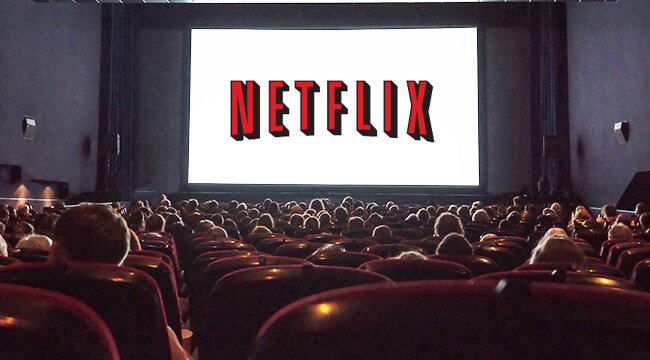The Big Screen: A Dying Industry
The movie theatre industry is responsible for entertaining mass audiences; however due to its outdated method of delivery in a digital age dominated by accessibility and convenience, it has experienced a drastic drop in consumer demand. This decline in consumer demand can also be caused by the increasing ticket prices and food service rates in addition to the large variety of alternative, cost-effective options such as streaming services offered by Netflix. Given this change of demand faced by movie theatres, the film industry is now facing an unprecedented risk in producing and investing in theatrically distributed movies. These financial risks have reshaped the content produced for mass audiences away from original storylines and towards clichéd and overdone blockbusters, while streaming services have risen as the pinnacle for original, accessible, and influential entertainment. Therefore, the shift out of the stagnant movie theatre industry and into the at-home entertainment industry is signalling a new era of movie entertainment in the digital age along with the decline of a once dominant industry.
Over the years, the movie theatre industry has faced a significant drop in consumer demand. Only 5% of modern-day households attend the movie theatre weekly as opposed to 80% of households in the 1940s. This drop in consumer demand can be attributed to the introduction of at-home entertainment platforms such as streaming services, on-demand television, and pirated websites, all of which have raised the relative costs of visiting the movie theatre. The most significant cost of visiting the movie theatre faced by consumers is the exorbitant price inflation. An average movie ticket price is around $12.07 CAD (60% more than it was in 2000) while a bag of popcorn is subject to a 1,275% mark up. It is this very inflation of ticket and food prices that prop up box office and individual theatre revenues. This suggests that the revenue generated by the modern-day movie theatre industry is a result of less people spending more money. An unsettling realization for those who choose to produce, invest, and create films for the purpose of theatrical distribution.
The fall in consumer demand for theatrically distributed movies has had devastating consequences on the film industry. Box office flops have cost major film studios millions of dollars in losses. King Arthur: Legend of the Sword (2017) was a sobering example of a box office flop with a production budget of $175M while only grossing $15M in revenue. This obvious decline in consumer engagement at the box office shows that producing films is a greater gamble than ever before due to the unpredictability of their financial success. As a consequence of this, large investments in entertainment have been shifting out of large-scale film productions and towards other forms of entertainment such as virtual reality. However, the film industry has taken numerous precautionary measures in an effort to maximize their financial investments in light of the increased risk of failure at the box office.
In an effort to increase consumer engagement, major movie studios have resorted to producing films that can guarantee a large enough audience to make a profit at the box office. This begs the question, what movies will increase engagement with an audience? It comes as no surprise to modern-day movie-goers that the majority of movies playing at the movie theatre consist of franchises, sequels, prequels, remakes, and adaptations of popular books, comics, and historical events. These movies guarantee an audience because they appeal to an established fan-base, provoke nostalgia, or create enough online clout to guarantee success. To put this into perspective, the top films of 2019 included Avengers Endgame (franchise), Lion King (remake), Toy Story 4 (remake), and Spiderman (comic). Although this content ensures financial success, it creates uncertain pressures for original stories, independent productions, and medium-tier films that cannot guarantee such success at the box office. Perhaps, if lucky, these movies can find their success through alternative channels such as Netflix.
Netflix is the most predominant film and television streaming service of the past decade and continues to face a rapid rise in consumer demand. According to Forbes, Netflix gains an additional 10% of subscribers per year and hosts around 59 million Netflix users in the US alone. So what makes Netflix more attractive to the average entertainment consumer? Netflix is distinctive because it provides the flexibility to watch films and television shows in the comfort of one’s own home for a monthly fee of $9.99 CAD (starting plan) while avoiding the costs of attending the movie theatre. There are also several other factors that highlight the innovative nature of Netflix in comparison to the antiquated nature of the movie theatre. In its advent, Netflix mailed DVDs to subscribers but subsequently transitioned their business online and later to apps on tablets and smart TVs as the movement towards online entertainment flourished. Netflix has also adopted a built-in marketing platform to showcase the medium-tier and independent movies that struggle to be seen or distributed in major movie theatre chains while also providing customized recommendations of films and television shows based off of user preferences to ensure satisfaction. These characteristics of Netflix promote a level of viewer engagement that supersedes any level of success in the current box office. Bird Box, for example, was viewed by 45 million different accounts on its opening weekend, which is an unimaginable feat for an original film at the box office.
This constant state of evolution exhibited by Netflix is in stark contrast with the movie theatre industry, whose model has faced little changes to its inherent structure to compete against other at-home entertainment services. The rise of Netflix and streaming services like Hulu and Amazon Prime have also encouraged other corporations like Apple, Pepsi, and BMW to pursue film distribution on online platforms, which suggests that this slow erosion of the movie theatre industry is going to continue.




